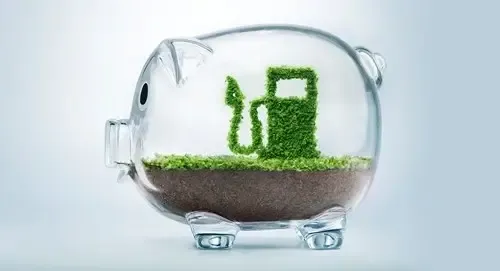Introduction
Adopting green habits is no longer a nice to have. It's essential… because your customers think the same. More importantly, it's a compelling proposition for the businesses we run and work for to want to help protect our environment for our sake and our children's sake.
Making efforts to use less energy, manage resources in an eco-friendly way, recycle more and plan routes and driving methods better can make a business greener. And it can be achieved while balancing profitability.
What Are the First Steps Towards Becoming a Green SME?
To kick off the journey, small and medium-sized enterprises (SMEs) should draft an action plan and look for specialist advice. With a focus on understanding how they currently affect the environment, these businesses can set objectives to lessen their carbon footprint.
Keeping track of your footprint
Monitoring how much CO2 your business produces with CO2 calculators and finding ways to balance it out can take your sustainability practices to a new level. Taking people who work for you and your customers on the journey will foster a culture focused on caring for the environment while also making customers more loyal to your brand.
The issue of sustainability is critical among SMEs now and the time is right to make money while also taking care of the environment.
Understanding Green Initiatives for SMEs

There are three important concepts:
Climate change - how weather patterns are changing over a long time because there's more greenhouse gas in the air.
Circular economy - reducing waste while making sure resources are used efficiently.
Sustainable operations - putting practices in place that don't harm the environment too much and support being socially responsible.
The Importance of Environmental Sustainability in UK Business
SMEs focusing on environmental sustainability will be ahead of the game because increasing numbers of customers look at whether a company cares about the environment before they buy. Then there's the money side - if you're smart about saving energy and not wasting materials, you'll spend less on bills and other costs over time.
Cost-Effective Ways to Implement Green Practices
For small businesses, going green doesn't mean spending a lot of money. With an action plan and some specialist advice, they can find affordable ways to be more sustainable. Technology providers have energy-saving gadgets, smart meters for tracking energy use and systems to help manage waste better.
Reducing Energy Consumption
Switching to LED lights, motion sensors that turn off lights and control heating and cooling when no one's around and choosing energy efficient appliances make a big impact. Solar panels allow businesses to create their own clean energy, making them less reliant on outside sources for power.
Maximising Efficiency with Route Planning
By making transportation more efficient, businesses can dramatically cut their carbon footprint. SMEs that tweak how they manage deliveries and plan their routes use less fuel and emit fewer pollutants. Tools such as fuel membership cards linked to apps designed for finding the best paths allow companies to instantly streamline their mileage and operations. Green driving habits including keeping vehicles in good shape and not letting them idle also help meet sustainability goals.
Tracking and Reducing CO2 Emissions
By assessing their carbon footprint businesses can spot where they need to get better and plan to lessen emissions. That's where CO2 calculators come in handy, helping managers assess the impact on the environment and keep tabs on improvements. That information helps companies make smarter choices about becoming a green SME.
What do CO2 Calculators do?
They measure the carbon footprint of a business by considering factors such as energy consumption, transportation, waste generation and water usage. By inputting data into the calculator, businesses generate reports that provide insights into their environmental performance. This can then help identify areas where emissions can be reduced and guide the development of action plans.
Strategies for Offsetting Carbon Emissions
The most effective firms balance out their carbon footprint by putting money into efforts that help save the environment or projects focused on renewable energy. This process of carbon offsetting means buying credits that match up to how much CO2 they emit with money going into tree planting or capturing methane gas to highlight their commitment to sustainability.
Engaging Your Team and Customers in Your Green Journey
Getting your team and customers on board with your eco-friendly mission is key. Involving employees in green projects and teaching them about eco-friendly ways will ensure they feel connected and committed to taking care of the environment.
Share how your products or services are good for nature with existing customers and tell them what steps you're taking towards being more sustainable to attract new ones that care about these issues as much as you do.
Creating a Culture of Sustainability Within Your SME
It's all about making sustainable actions and beliefs a key part of how your company works and its culture. Weave sustainability into the heart of what your business aims to do, set clear eco-friendly goals and make sure green practices are part of everyday work life.
Finding a balance between making money and being kind to the planet is vital. Going green isn't just good for Earth… it also helps people love your brand even more, so why wouldn't you do it?


